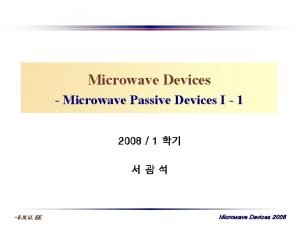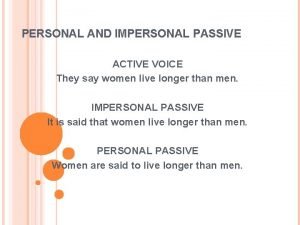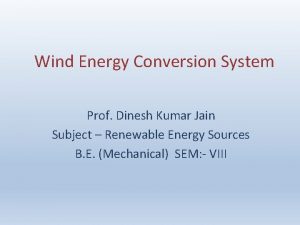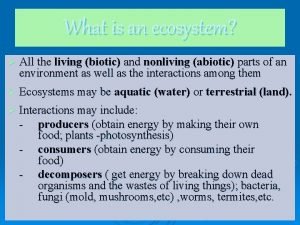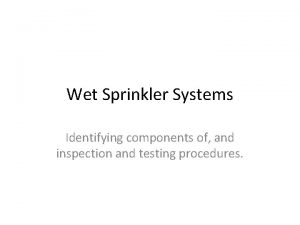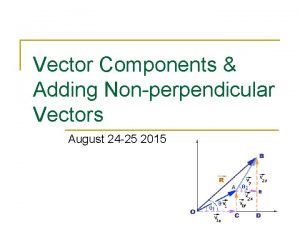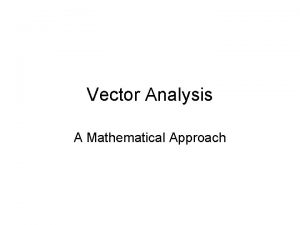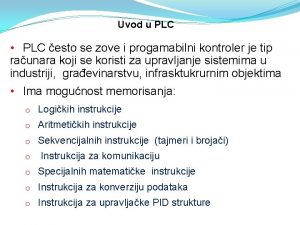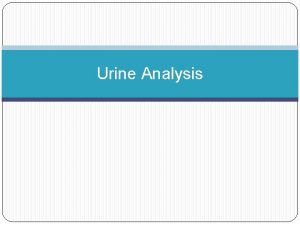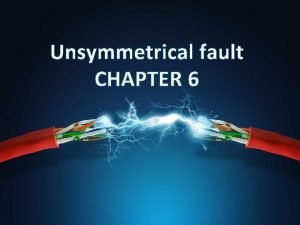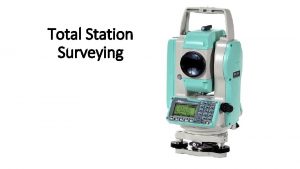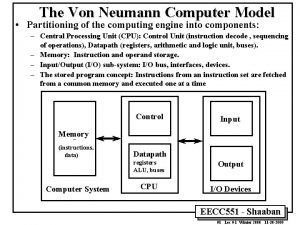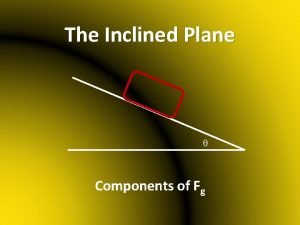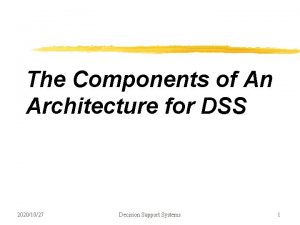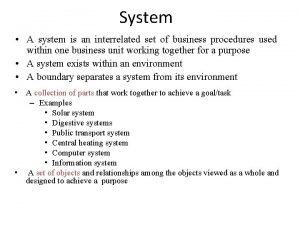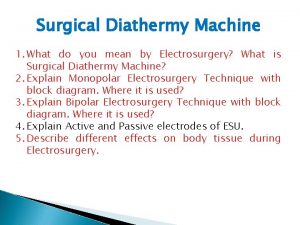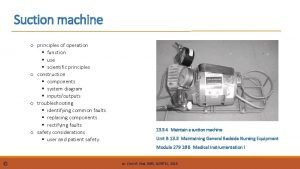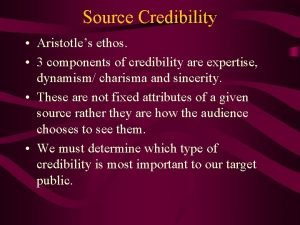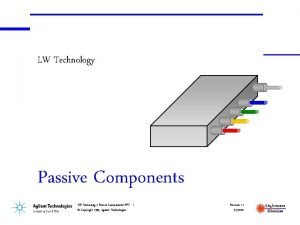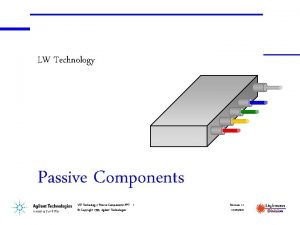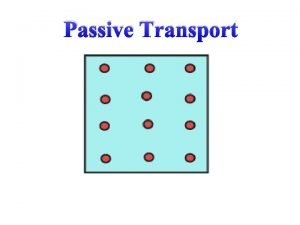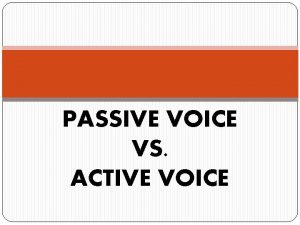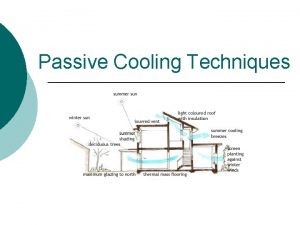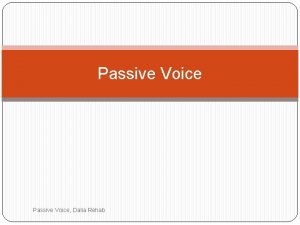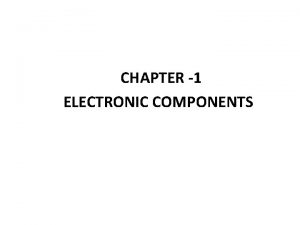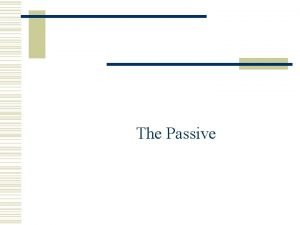LW Technology Passive Components LW Technology Passive Components





























































- Slides: 61

LW Technology Passive Components LW Technology (Passive Components). PPT - 1 © Copyright 1999, Agilent Technologies Revision 1. 1 11/29/2020

Patchcords • “Jumper cables” to connect devices and instruments • “Adapter cables” to connect interfaces using different connector styles • Insertion loss is dominated by the connector losses (2 m fiber has almost no attenuation) • Often yellow sheath used for single-mode fiber, orange sheath for multimode LW Technology (Passive Components). PPT - 2 © Copyright 1999, Agilent Technologies Revision 1. 1 11/29/2020

Wavelength-Independent Couplers • Wavelength-Independent coupler (WIC) types: – couple light from each fiber to all the fibers at the other side – 50% / 50% (3 d. B) most common 4 port type – 1%, 5% or 10% taps (often 3 port devices) • Excess Loss (EL): – Measure of power “wasted” in the component EL = -10 • log 10 Pout Pin LW Technology (Passive Components). PPT - 3 © Copyright 1999, Agilent Technologies Revision 1. 1 11/29/2020

Wavelength-Dependent Couplers • Wavelength-division multiplexers (WDM) types: – – 3 port devices (4 th port terminated) 1310 / 1550 nm (“classic” WDM technology) 1480 / 1550 nm and 980 / 1550 nm for pumping optical amplifiers (see later) 1550 / 1625 nm for network monitoring • Insertion and rejection: 1 Common 2 – Low loss (< 1 d. B) for path wavelength – High loss (20 to 50 d. B) for other wavelength LW Technology (Passive Components). PPT - 4 © Copyright 1999, Agilent Technologies Revision 1. 1 11/29/2020

Isolators • Main application: – To protect lasers and optical amplifiers from light coming back (which otherwise can cause instabilities) • Insertion loss: – Low loss (0. 2 to 2 d. B) in forward direction – High loss in reverse direction: 20 to 40 d. B single stage, 40 to 80 d. B dual stage) • Return loss: – More than 60 d. B without connectors LW Technology (Passive Components). PPT - 5 © Copyright 1999, Agilent Technologies Revision 1. 1 11/29/2020

Filter Characteristics • Passband i-1 i Crosstalk Passband i+1 – Insertion loss – Ripple – Wavelengths (peak, center, edges) – Bandwidths (0. 5 d. B, 3 d. B, . . ) – Polarization dependence • Stopband – Crosstalk rejection – Bandwidths (20 d. B, 40 d. B, . . ) LW Technology (Passive Components). PPT - 6 © Copyright 1999, Agilent Technologies Crosstalk Revision 1. 1 11/29/2020

Dielectric Filters • Thin-film cavities – – Alternating dielectric thin-film layers with different refractive index Multiple reflections cause constructive & destructive interference Variety of filter shapes and bandwidths (0. 1 to 10 nm) Insertion loss 0. 2 to 2 d. B, stopband rejection 30 to 50 d. B Incoming Spectrum Transmitted Spectrum Reflected Spectrum 30 d. B Layers LW Technology (Passive Components). PPT - 7 © Copyright 1999, Agilent Technologies Substrate 1535 nm 1555 nm Revision 1. 1 11/29/2020

Tunable Fabry-Perot Filters • Filter shape – Repetitive passband with Lorentzian shape – Free Spectral Range FSR =c/2 • n • l (l: cavity length) – Finesss F = FSR / BW (BW: 3 d. B bandwidth) • Typical specifications for 1550 nm applications – FSR: 4 THz to 10 THz, F: 100 to 200, BW: 20 to 100 GHz – Insertion loss: 0. 5 to 35 d. B 1 d. B Mirrors Fiber Piezoelectric-actuators LW Technology (Passive Components). PPT - 8 © Copyright 1999, Agilent Technologies FSR 30 d. B Optical Frequency Revision 1. 1 11/29/2020

Fiber Bragg Gratings (FBG) • Single-mode fiber with “modulated” refractive index – Refractive index changed using high power UV radiation • Regular interval pattern: reflective at one wavelength – Notch filter, add / drop multiplexer (see later) • Increasing intervals: “chirped” FBG – Compensation for chromatic dispersion LW Technology (Passive Components). PPT - 9 © Copyright 1999, Agilent Technologies Revision 1. 1 11/29/2020

Circulators • Optical crystal technology similar to isolators – Insertion loss 0. 3 to 1. 5 d. B, isolation 20 to 40 d. B • Typical configuration: 3 port device – Port 1 – Port 2 – Port 3 -> -> -> Slow Port 2 Port 3 Port 1 Circulator & chirped FGB configured to compensate CD Fast LW Technology (Passive Components). PPT - 10 © Copyright 1999, Agilent Technologies Revision 1. 1 11/29/2020

Add / Drop Nodes Circulator with FBG design Drop i Dielectric thin-film filter design Add i Passband Common Add / Drop LW Technology (Passive Components). PPT - 11 © Copyright 1999, Agilent Technologies Filter reflects i Revision 1. 1 11/29/2020

Multiplexers (MUX) / Demultiplexers (DEMUX) • Key component of wavelength-division multiplexing technology (DWDM) • Variety of technologies – Cascaded dielectric filters – Cascaded FBGs – Phased arrays (see later) • High crosstalk suppression essential for demultiplexing LW Technology (Passive Components). PPT - 12 © Copyright 1999, Agilent Technologies Revision 1. 1 11/29/2020

Array Waveguide Grating (AWG) 1 a 2 a 3 a 4 a 1 b 2 b 3 b 4 b 1 c 2 c 3 c 4 c 1 d 2 d 3 d 4 d Rows. . 1 a 2 a 3 a 4 a. . translate into. . columns If only one input is used: wavelength demultiplexer! LW Technology (Passive Components). PPT - 13 © Copyright 1999, Agilent Technologies 4 b 3 c 1 b 4 c 2 b 1 c 3 b 2 c Revision 1. 1 11/29/2020 2 d 3 d 4 d 1 d

Review Questions 1. What is the difference between a WIC and a WDM? 2. What are the losses of a 10% tap? 3. What does a demultiplexer do? LW Technology (Passive Components). PPT - 14 © Copyright 1999, Agilent Technologies Revision 1. 1 11/29/2020

LW Technology Transmitters & Receivers LW Technology (Passive Components). PPT - 15 © Copyright 1999, Agilent Technologies Revision 1. 1 11/29/2020

Light-emitting Diode (LED) • Datacom through air & multimode fiber – Very inexpensive (laptops, airplanes, lans) • Key characteristics – – – Most common for 780, 850, 1300 nm Total power up to a few W Spectral width 30 to 100 nm Coherence length 0. 01 to 0. 1 mm Little or not polarized Large NA ( poor coupling into fiber) LW Technology (Passive Components). PPT - 16 © Copyright 1999, Agilent Technologies P peak P -3 d. B BW Revision 1. 1 11/29/2020

Fabry-Perot (FP) Laser • Multiple longitudinal mode (MLM) spectrum • “Classic” semiconductor laser P peak – First fiberoptic links (850 or 1300 nm) – Today: short & medium range links • Key characteristics – – – – Most common for 850 or 1310 nm Total power up to a few mw Spectral width 3 to 20 nm Mode spacing 0. 7 to 2 nm Highly polarized Coherence length 1 to 100 mm Small NA ( good coupling into fiber) LW Technology (Passive Components). PPT - 17 © Copyright 1999, Agilent Technologies P Threshold I Revision 1. 1 11/29/2020

Distributed Feedback (DFB) Laser • Single longitudinal mode (SLM) spectrum • High performance telecommunication laser – Most expensive (difficult to manufacture) – Long-haul links & DWDM systems • Key characteristics – – – Mostly around 1550 nm Total power 3 to 50 mw Spectral width 10 to 100 MHz (0. 08 to 0. 8 pm) Sidemode suppression ratio (SMSR): > 50 d. B Coherence length 1 to 100 m Small NA ( good coupling into fiber) LW Technology (Passive Components). PPT - 18 © Copyright 1999, Agilent Technologies P peak SMSR Revision 1. 1 11/29/2020

Vertical Cavity Surface Emitting Lasers (VCSEL) • Distributed Bragg Reflector (DBR) Mirrors – Alternating layers of semiconductor material – 40 to 60 layers, each l / 4 thick – Beam matches optical acceptance needs of fibers more closely • Key properties – – – Wavelength range 780 to 980 nm (gigabit ethernet) Spectral width: <1 nm Total power: >-10 d. Bm Coherence length: 10 cm to 10 m Numerical aperture: 0. 2 to 0. 3 LW Technology (Passive Components). PPT - 19 © Copyright 1999, Agilent Technologies p-DBR active n-DBR Revision 1. 1 11/29/2020

Other Light Sources • White light source – Specialized tungsten light bulb – Wavelength range 900 to 1700 nm, – Power density 0. 1 to 0. 4 nw/nm (SM), 10 to 25 nw/nm (MM) • Amplified spontaneous emission (ASE) source – “Noise” of an optical amplifier without input signal – Wavelength range 1525 to 1570 nm – Power density 10 to 100 µw/nm • External cavity laser – Most common for 1550 nm band (some for 1310 nm) – Tunable over more than 100 nm, power up to 10 mw – Spectrum similar to DFB laser, bandwidth 10 k. Hz to 1 MHz LW Technology (Passive Components). PPT - 20 © Copyright 1999, Agilent Technologies Revision 1. 1 11/29/2020

Basic Transmitter Design • • Optimized for one particular bit rate & wavelength Often temperature stabilized laser Internal (direct) or external modulation Digital modulation – Extinction ratio: 9 to 15 d. B – Forward error correction – Scrambling of bits to reduce long sequences of 1 s or 0 s (reduced DC and low frequency spectral content) • Analog modulation – Modulation index typically 2 to 4% – Laser bias optimized for maximum linearity LW Technology (Passive Components). PPT - 21 © Copyright 1999, Agilent Technologies Revision 1. 1 11/29/2020

Modulation Principles • Direct (laser current) – Inexpensive – Can cause chirp up to 1 nm (wavelength variation caused by variation in electron densities in the lasing area) DC RF • External – 2. 5 to 40 gb/s – AM sidebands (caused by modulation spectrum) dominate linewidth of optical signal DC MOD RF LW Technology (Passive Components). PPT - 22 © Copyright 1999, Agilent Technologies Revision 1. 1 11/29/2020

External Modulators Mach-Zehnder Principle DFB laser with external on-chip modulator Modulation section LW Technology (Passive Components). PPT - 23 © Copyright 1999, Agilent Technologies Revision 1. 1 11/29/2020 Laser section

Photodiodes • PIN (p-layer, intrinsic layer, n-layer) – Highly linear, low dark current n + • Avalanche photo diode (APD) – Gain up to x 100 lifts detected optical signal above electrical noise of receiver – Best for high speed and highly sensitive receivers – Strong temperature dependence – Quantum efficiency (electrons/photon) – Dark current – Responsivity (current vs. L) APD Gain • Main characteristics Bias Voltage LW Technology (Passive Components). PPT - 24 © Copyright 1999, Agilent Technologies Revision 1. 1 11/29/2020

Material Aspects Responsivity (A/W) • Silicon (Si) – Least expensive 1. 0 Quantum Efficiency = 1 Germanium • Germanium (Ge) – “Classic” detector 0. 5 In. Ga. As • Indium gallium arsenide (In. Ga. As) – Highest speed Silicon 0. 1 500 LW Technology (Passive Components). PPT - 25 © Copyright 1999, Agilent Technologies 1500 1000 Wavelength nm Revision 1. 1 11/29/2020

Basic Receiver Design • Optimized for one particular – Sensitivity range – Wavelength – Bit rate Bias AGC -g • Can include circuits for telemetry Temperature Control LW Technology (Passive Components). PPT - 26 © Copyright 1999, Agilent Technologies Clock Recovery Decision Circuit Monitors & Alarms Remote Control Revision 1. 1 11/29/2020 0110

Receiver Sensitivity • Bit error ratio (BER) versus input power (pi) BER – Minimum input power depends on acceptable bit error rate – Power margins important to tolerate imperfections of link (dispersion, noise from optical amplifiers, etc. ) – Theoretical curve well understood – Many receivers designed for 1 E-12 or better BER Pi (d. Bm) LW Technology (Passive Components). PPT - 27 © Copyright 1999, Agilent Technologies Revision 1. 1 11/29/2020

Regenerator • Receiver followed by a transmitter – No add or drop of traffic – Designed for one bit rate & wavelength • Signal regeneration – Reshaping & timing of data stream – Inserted every 30 to 80 km before optical amplifiers became commercially available – Today: reshaping necessary after about 600 km (at 2. 5 Gb/s), often done by SONET/SDH add/drop multiplexers or digital cross-connects LW Technology (Passive Components). PPT - 28 © Copyright 1999, Agilent Technologies Revision 1. 1 11/29/2020

Conceptual Terminal Diagram 51. 84 Mb/s . . . Synchronous Container Mapping . . PDH Streams (Tributaries) . . 1. 5 Mb/s Synchronous Container Mapping Interleaving 2488. 32 Mb/s TX RX Transmission Path SONET / SDH Streams Interleaving TX RX Protection Path Monitoring & Management LW Technology (Passive Components). PPT - 29 © Copyright 1999, Agilent Technologies Revision 1. 1 11/29/2020

Review Questions 1. What are the differences between an LED, FP, and DFB lasers? 2. Which photodiode do you use for – Data communication? – Speed longhaul traffic? 3. How do you define receiver sensitivity? LW Technology (Passive Components). PPT - 30 © Copyright 1999, Agilent Technologies Revision 1. 1 11/29/2020

LW Technology Optical Amplifiers LW Technology (Passive Components). PPT - 31 © Copyright 1999, Agilent Technologies Revision 1. 1 11/29/2020

Erbium Properties • Erbium: rare element with phosphorescent properties – Photons at 1480 or 980 nm activate electrons into a metastable state – Electrons falling back emit light in the 1550 nm range 540 670 • Spontaneous emission 820 – Occurs randomly (time constant ~1 ms) • Stimulated emission – By electromagnetic wave – Emitted wavelength & phase are identical to incident one Metastable state 980 1480 Ground state LW Technology (Passive Components). PPT - 32 © Copyright 1999, Agilent Technologies Revision 1. 1 11/29/2020

Basic EDF Amplifier Design • Erbium-doped fiber amplifier (EDFA) most common – Commercially available since the early 1990’s – Works best in the range 1530 to 1565 nm – Gain up to 30 d. B (1000 photons out per photon in!) • Optically transparent – “Unlimited” RF bandwidth – Wavelength transparent Input Coupler Isolator 1480 or 980 nm Pump Laser Output Erbium Doped Fiber LW Technology (Passive Components). PPT - 33 © Copyright 1999, Agilent Technologies Revision 1. 1 11/29/2020

Amplified Spontaneous Emission • Erbium randomly emits photons between 1520 and 1570 nm – – Spontaneous emission (SE) is not polarized or coherent Like any photon, SE stimulates emission of other photons With no input signal, eventually all optical energy is consumed into amplified spontaneous emission Input signal(s) consume metastable electrons much less ASE Random spontaneous emission (SE) Amplification along fiber LW Technology (Passive Components). PPT - 34 © Copyright 1999, Agilent Technologies Amplified spontaneous emission (ASE) Revision 1. 1 11/29/2020

Output Spectra +10 d. Bm Amplified signal spectrum (input signal saturates the optical amplifier) ASE spectrum when no input signal is present -40 d. Bm 1525 nm 1575 nm LW Technology (Passive Components). PPT - 35 © Copyright 1999, Agilent Technologies Revision 1. 1 11/29/2020

Time-Domain Properties Input Signal on off Turn-On Overshoot on off ~ 10. . 50 µs Gain x Signal ASE level (signal absent) ASE level (signal present) ~ 0. 2. . 0. 8 ms LW Technology (Passive Components). PPT - 36 © Copyright 1999, Agilent Technologies Revision 1. 1 11/29/2020 on

Optical Gain (G) • G = S Output / S Input S Output: S Input: output signal (without noise from amplifier) input signal • Input signal dependent – Operating point (saturation) of EDFA strongly depends on power and wavelength of incoming signal Gain (d. B) 40 P Input: -30 d. Bm 30 20 10 1520 LW Technology (Passive Components). PPT - 37 © Copyright 1999, Agilent Technologies -20 d. Bm -10 d. Bm -5 d. Bm 1540 1560 Wavelength (nm) Revision 1. 1 11/29/2020 1580

Noise Figure (NF) • NF = P ASE / (h • • G • B OSA) P ASE: h: : G: B OSA: ASE power measured by OSA Plank’s constant Optical frequency Gain of EDFA Optical bandwidth [Hz] of OSA • Input signal dependent – In a saturated EDFA, the NF depends mostly on the wavelength of the signal – Physical limit: 3. 0 d. B LW Technology (Passive Components). PPT - 38 © Copyright 1999, Agilent Technologies Noise Figure (d. B) 10 7. 5 5. 0 1520 1540 1560 Wavelength (nm) Revision 1. 1 11/29/2020 1580

Gain Compression • Total output power: Amplified signal + ASE – EDFA is in saturation if almost all Erbium ions are consumed for amplification – Total output power remains almost constant – Lowest noise figure Total P out Max -3 d. B • Preferred operating point Gain – Power levels in link stabilize automatically -30 -20 P in (d. Bm) LW Technology (Passive Components). PPT - 39 © Copyright 1999, Agilent Technologies Revision 1. 1 11/29/2020 -10

Polarization Hole Burning (PHB) • Polarization Dependent Gain (PDG) – Gain of small signal polarized orthogonal to saturating signal 0. 05 to 0. 3 d. B greater than the large signal gain – Effect independent of the state of polarization of the large signal – PDG recovery time constant relatively slow • ASE power accumulation – ASE power is minimally polarized – ASE perpendicular to signal experiences higher gain – PHB effects can be reduced effectively by quickly scrambling the state of polarization (SOP) of the input signal LW Technology (Passive Components). PPT - 40 © Copyright 1999, Agilent Technologies Revision 1. 1 11/29/2020

Spectral Hole Burning (SHB) • Gain depression around saturating signal – – Strong signals reduce average ion population Hole width 3 to 10 nm Hole depth 0. 1 to 0. 4 d. B 1530 nm region more sensitive to SHB than 1550 nm region 0. 36 d. B • Implications – Usually not an issue in transmission systems (single l or DWDM) – Can affect accuracy of some lightwave measurements 7 nm 1540 1545 1550 Wavelength (nm) LW Technology (Passive Components). PPT - 41 © Copyright 1999, Agilent Technologies Revision 1. 1 11/29/2020 1560

EDFA Categories • In-line amplifiers – Installed every 30 to 70 km along a link – Good noise figure, medium output power • Power boosters – Up to +17 d. Bm power, amplifies transmitter output – Also used in cable TV systems before a star coupler • Pre-amplifiers – Low noise amplifier in front of receiver • Remotely pumped – Electronic free extending links up to 200 km and more (often found in submarine applications) TX RX Pump LW Technology (Passive Components). PPT - 42 © Copyright 1999, Agilent Technologies Revision 1. 1 11/29/2020

Commercial Designs Input EDF Isolator Output Isolator Pump Lasers Input Monitor Telemetry & Remote Control LW Technology (Passive Components). PPT - 43 © Copyright 1999, Agilent Technologies Output Monitor Revision 1. 1 11/29/2020

Security Features • Input power monitor – Turning on the input signal can cause high output power spikes that can damage the amplifier or following systems – Control electronics turn the pump laser(s) down if the input signal stays below a given threshold for more than about 2 to 20 µs • Backreflection monitor – Open connector at the output can be a laser safety hazard – Straight connectors typically reflect 4% of the light back – Backreflection monitor shuts the amplifier down if backreflected light exceeds certain limits LW Technology (Passive Components). PPT - 44 © Copyright 1999, Agilent Technologies Revision 1. 1 11/29/2020

Other Amplifier Types • Semiconductor Optical Amplifier (SOA) – Basically a laser chip without any mirrors – Metastable state has nanoseconds lifetime (-> nonlinearity and crosstalk problems) – Potential for switches and wavelength converters • Praseodymium-doped Fiber Amplifier (PDFA) – – – Similar to EDFAs but 1310 nm optical window Deployed in CATV (limited situations) Not cost efficient for 1310 telecomm applications Fluoride based fiber needed (water soluble) Much less efficient (1 W pump @ 1017 nm for 50 m. W output) LW Technology (Passive Components). PPT - 45 © Copyright 1999, Agilent Technologies Revision 1. 1 11/29/2020

Security Features • Input power monitor – Turning on the input signal can cause high output power spikes that can damage the amplifier or following systems – Control electronics turn the pump laser(s) down if the input signal stays below a given threshold for more than about 2 to 20 µs • Backreflection monitor – Open connector at the output can be a laser safety hazard – Straight connectors typically reflect 4% of the light back – Backreflection monitor shuts the amplifier down if backreflected light exceeds certain limits LW Technology (Passive Components). PPT - 46 © Copyright 1999, Agilent Technologies Revision 1. 1 11/29/2020

Other Amplifier Types • Semiconductor Optical Amplifier (SOA) – Basically a laser chip without any mirrors – Metastable state has nanoseconds lifetime (-> nonlinearity and crosstalk problems) – Potential for switches and wavelength converters • Praseodymium-doped Fiber Amplifier (PDFA) – – – Similar to EDFAs but 1310 nm optical window Deployed in CATV (limited situations) Not cost efficient for 1310 telecomm applications Fluoride based fiber needed (water soluble) Much less efficient (1 W pump @ 1017 nm for 50 m. W output) LW Technology (Passive Components). PPT - 47 © Copyright 1999, Agilent Technologies Revision 1. 1 11/29/2020

Future Developments • Broadened gain spectrum – 2 EDFs with different co-dopants (phosphor, aluminum) – Can cover 1525 to 1610 nm • Gain flattening – Erbium Fluoride designs (flatter gain profile) – Incorporation of Fiber Bragg Gratings (passive compensation) • Increased complexity – Active add/drop, monitoring and other functions LW Technology (Passive Components). PPT - 48 © Copyright 1999, Agilent Technologies Revision 1. 1 11/29/2020

Review Questions 1. What components do you need to build an EDFA? 2. What is ASE? 3. How do you saturate an amplifier? LW Technology (Passive Components). PPT - 49 © Copyright 1999, Agilent Technologies Revision 1. 1 11/29/2020

LW Technology Wavelength-Division Multiplexing LW Technology (Passive Components). PPT - 50 © Copyright 1999, Agilent Technologies Revision 1. 1 11/29/2020

Basic Design 1 NT 2 NT n-1 NT n NT Demultiplexer NT Multiplexer Network Terminals (Dense Wavelength-Division Multiplexing) Monitor Points Wavelength Converter LW Technology (Passive Components). PPT - 51 © Copyright 1999, Agilent Technologies Revision 1. 1 11/29/2020

DWDM Spectrum RL +0. 00 d. Bm 5. 0 d. B/DIV Channels: 16 Spacing: 0. 8 nm Amplified Spontaneous Emission (ASE) 1545 nm LW Technology (Passive Components). PPT - 52 © Copyright 1999, Agilent Technologies 1565 nm Revision 1. 1 11/29/2020

WDM Standards • ITU-T draft Rec. G. mcs: “Optical Interfaces for Multichannel Systems with Optical Amplifiers” – Wavelength range 1532 to 1563 nm – 100 GHz (0. 8 nm) channel spacing, 50 GHz proposed – 193. 1 THz (1552. 51 nm) reference • ITU-T draft Rec. G. onp: “Physical Layer Aspects of Optical Networks” – General and functional requirements LW Technology (Passive Components). PPT - 53 © Copyright 1999, Agilent Technologies Revision 1. 1 11/29/2020

EDFAs In DWDM Systems Optical amplifiers in DWDM systems require special considerations because of: • Gain flatness (gain tilt) requirements • Gain competition • Nonlinear effects in fibers LW Technology (Passive Components). PPT - 54 © Copyright 1999, Agilent Technologies Revision 1. 1 11/29/2020

Gain Flatness (Gain Tilt) • Gain versus wavelength – The gain of optical amplifiers depends on wavelength – Signal-to-noise ratios can degrade below acceptable levels (long links with cascaded amplifiers) G • Compensation techniques – Signal pre-emphasis – Gain flattening filters – Additional doping of amplifier with Fluorides LW Technology (Passive Components). PPT - 55 © Copyright 1999, Agilent Technologies Revision 1. 1 11/29/2020

Gain Competition • Total output power of a standard EDFA remains almost constant even if input power fluctuates significantly • If one channel fails (or is added) then the remaining ones increase (or decrease) their output power Output power after channel one failed Equal power of all four channels LW Technology (Passive Components). PPT - 56 © Copyright 1999, Agilent Technologies Revision 1. 1 11/29/2020

Output Power Limitations • High power densities in SM fiber can cause – – Stimulated Brillouin scattering (SBS) Stimulated Raman scattering (SRS) Four wave mixing (FWM) Self-phase and cross-phase modulation (SPM, CPM) • Most designs limit total output power to +17 d. Bm – Available channel power: 50/N m. W (N = number of channels) LW Technology (Passive Components). PPT - 57 © Copyright 1999, Agilent Technologies Revision 1. 1 11/29/2020

DWDM Trends • Higher capacity – 120 channels for access network applications – 50 GHz channel spacing (25 GHz under investigation) – Wavelength range extended up to 1625 nm • All optical network – – – Modulation & protocol transparency Optical add/drop multiplexers Optical cross-connects Optical switch fabrics Wavelength conversion LW Technology (Passive Components). PPT - 58 © Copyright 1999, Agilent Technologies Revision 1. 1 11/29/2020

Add / Drop Points • Fixed configurations – Simple and inexpensive – Inflexible • Flexible configurations – Selective wavelength add/drop Phased Array • Future designs more sophisticated – High capacity & performance LW Technology (Passive Components). PPT - 59 © Copyright 1999, Agilent Technologies Revision 1. 1 11/29/2020

Research Topics • Optical cross-connects – Technology for large optical switches • Network and traffic management – Digital versus optical routing – Traffic amount & network size – Virtual networks (private networks over public paths) • Wavelength conversion – Wavelengths must be reused in large networks for optimal use of available capacity – Eventually has to include optical pulse regeneration (re-shaping, re-timing) LW Technology (Passive Components). PPT - 60 © Copyright 1999, Agilent Technologies Revision 1. 1 11/29/2020

Review Questions 1. What technologies enable the use of DWDM? 2. What are the advantages of DWDM? 3. What are the disadvantages of DWDM? LW Technology (Passive Components). PPT - 61 © Copyright 1999, Agilent Technologies Revision 1. 1 11/29/2020
 Passive and active microwave devices
Passive and active microwave devices Hospitality technology components
Hospitality technology components Components of information and communication technology
Components of information and communication technology Present perfect passive
Present perfect passive Present simple active and passive voice
Present simple active and passive voice Personal passive and impersonal passive
Personal passive and impersonal passive Present progressive passive examples
Present progressive passive examples Present simple passive
Present simple passive Pltw wood frame systems
Pltw wood frame systems Classification of wecs
Classification of wecs Four main components of whmis 2015
Four main components of whmis 2015 Biotic components of an ecosystem
Biotic components of an ecosystem Wet sprinkler system components
Wet sprinkler system components Components of black board skill
Components of black board skill Gis hardware components
Gis hardware components Components of a watershed
Components of a watershed Graduated rhythm in art
Graduated rhythm in art 14 components of need theory
14 components of need theory Adding non perpendicular vectors
Adding non perpendicular vectors Components of a vector calculator
Components of a vector calculator Input module
Input module Components of empathy
Components of empathy Usability is a quality attribute that assesses
Usability is a quality attribute that assesses Principle of fouchet test
Principle of fouchet test Components of elbow joint
Components of elbow joint Unsymmetrical fault analysis
Unsymmetrical fault analysis Mycin expert system architecture
Mycin expert system architecture Principles of lecture method
Principles of lecture method Enlarged drawings show components larger than their
Enlarged drawings show components larger than their General objectives of computer
General objectives of computer Components of fiscal policy
Components of fiscal policy Components of total station
Components of total station A time to think
A time to think Components of a thesis statement
Components of a thesis statement Component of thesis
Component of thesis Beers and lambert law
Beers and lambert law Von neumann model components
Von neumann model components Structural components of the english spelling system
Structural components of the english spelling system Siop model
Siop model Nursing diagnosis examples
Nursing diagnosis examples Staffing vocabulary match
Staffing vocabulary match Quadrangular membrane
Quadrangular membrane Fg components
Fg components Facial nerve functional components
Facial nerve functional components Dss architecture components
Dss architecture components What are 8 elements of culture
What are 8 elements of culture 6 components of fitness
6 components of fitness Means communication at a distance
Means communication at a distance Parts of computer system
Parts of computer system Arkansas tess teacher tracks
Arkansas tess teacher tracks Interrelated system
Interrelated system A survival mindset is comprised of which three components?
A survival mindset is comprised of which three components? Electrodes used in surgical diathermy
Electrodes used in surgical diathermy Suction machine parts and function
Suction machine parts and function Components of campaign plan
Components of campaign plan Strongly connected components
Strongly connected components Culvert components
Culvert components Components of source credibility
Components of source credibility 4 major components of soil
4 major components of soil Software component example
Software component example Components of effective writing
Components of effective writing Six pillars of idea
Six pillars of idea
